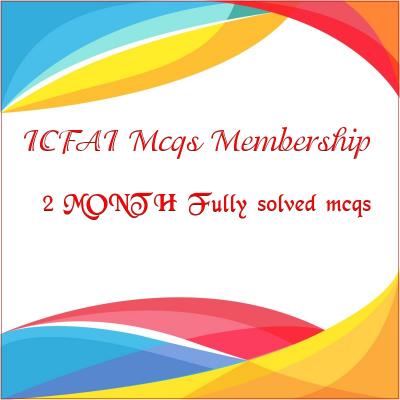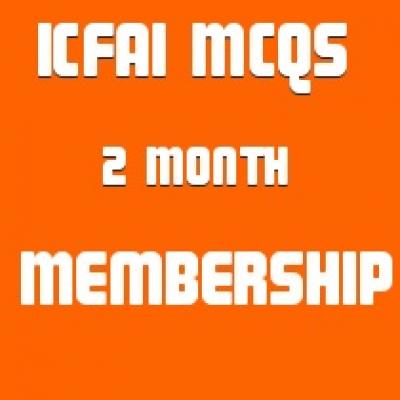PURCHASE MANAGEMENT
Price:
Rs500
CASE 5
Consolidated Products is a $21 billion company headquartered in Atlanta, Georgia. The company’s five business units, which offer a wide array of products and services, are the result of an aggressive strategy of mergers and acquisitions starting in the late 1980s. Exhibit 1 provides an overview of Consolidated Products and its five primary business units. The corporate staff is surprisingly small, comprised of general management, legal staff, and human resources. Part of the reason for this small staff is due to the eclectic array of businesses housed within one corporate entity. A Business Week editor recently commented that “Consolidated Products could easily be broken up into five separate companies, since at one time it was five separate companies.” The editor also said that if the company “ever learned how to leverage its size in the marketplace, Consolidated Products could be a Wall Street powerhouse!”
While Consolidated Products is a global corporation with facilities around the world, it operates each business unit as a highly independent and decentralized company. The corporate culture is best described as entrepreneurial, with each business unit being headed by an executive vice president who has complete profit and loss accountability. This case focuses on the Engineered Materials business unit.
ENGINEERED MATERIALS
The Engineered Materials business unit, acquired in 1999, is the newest and smallest addition to Consolidated Products portfolio of companies. Part of this business unit’s efforts over the last year have centered on becoming more integrated across the various functional groups that make up the business unit. Unfortunately, this unit was previously part of Andreas Manufacturing, an old-line company with a strict hierarchical culture. Executive managers at Consolidated Products knew this purchase would present some interesting challenges regarding how this unit would fit in with the entrepreneurial culture that Consolidated Products has tried to create. Unfortunately, Engineered Materials is struggling. In fact, internal problems created by the efforts to change the culture helped push 2003 sales down 8 percent as the rest of the industry increased by 5 percent.
Executive management believes that the use of cross-functional teams is a primary way to change the unit’s culture while achieving major performance improvement savings. One of the teams that management expects to deliver major cost savings is the composite materials team. This team, chartered in November 2002, had initial savings targets of 15 percent cost and productivity savings, which translated to $3 million in annual savings. The team, which has been meeting on a regular basis for 12 months, has struggled to develop a purchasing strategy for composite materials. Unfortunately, this team is not working well together or making much progress, which has frustrated executive management and has affected the financial projections for 2004 and 2005. The team has fallen far short of its expectations. While no one has formally identified the exact reason(s) for the less than optimal performance, an internal consultant has interviewed several team members. Examples from comments made by these team members include—
-
Some of the team’s members are not that committed to the assignment. One even commented that his regular job responsibilities come first. After all, that’s where his manager really holds him accountable. And, he continued, what is really the risk of not supporting the team? The way this member sees it, the real risk comes from putting in too much time on the team and neglecting “the real work.”
-
Some of the team members maintain they do not really understand the team’s goals. The goals that the team developed are vague, or simply address team behavior. For example, one goal is for the team to “meet once a week.”
-
While the team has a formally designated leader, he spends too much time talking and not enough time listening. He also gets angry when team members don’t agree with his position on an issue. Several members commented how rude he can be to team members.
-
Some members perceive that management is not forthcoming with the necessary resources. In the opinion of one member,” Team members spend too much time requesting the necessary resources rather than working together on team assignments.”
-
One member asked what qualified him to be on a team. He said he was never on a cross-functional team in his 20 years with the company. How is he supposed to know what it takes to be part of a “higher performance work unit?” This member further questioned whether the Engineered Materials unit, given its history and culture, is ready for team-based management.
Although the methodology was not rigorous, the internal consultant quickly determined that the use of teams at this business unit was in serious need of help.
Questions:
-
Gaining team member commitment is critical to team success. Discuss how this unit can use its employee performance evaluation and reward system can encourage members to support cross-functional project teams. Be sure to provide examples of the kinds of rewards available to team members.
-
Goal setting is also important to team success. Discuss how organizations and teams should establish goals, and why having team goals is important.
-
Research has demonstrated a strong link between effective team leadership and cross-functional team success. Describe the characteristics of an effective team leader. Next, describe the responsibilities and requirements of cross-functional team leaders.
-
Identify the kinds of resources, in general, that cross-functional sourcing teams should be provided to be successful. (Note: A specific team could differ in its needs compared to other teams)
-
Identify the types of training that team members at Engineered Materials will likely require before they can effectively support team interaction and activities.
1. Case study solved answers
2. pdf/word
3. Fully Solved with answers







